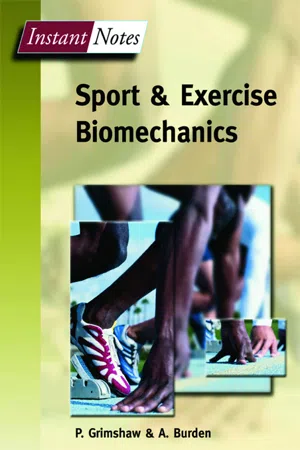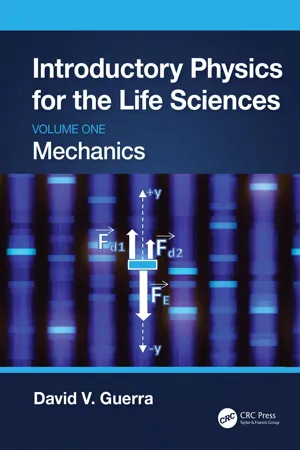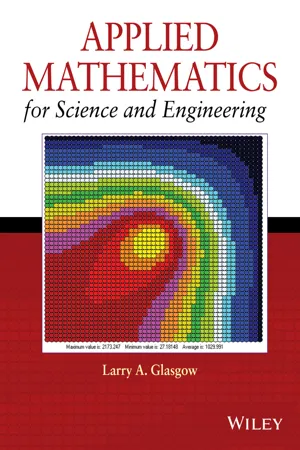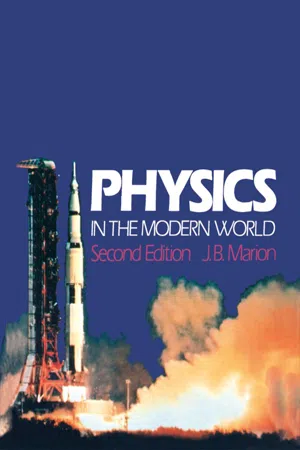Physics
Torque Vector
Torque vector refers to a quantity that represents the rotational effect of a force. It has both magnitude and direction, and its direction is perpendicular to the plane formed by the force and the point of rotation. In physics, torque vectors are used to describe the rotational motion of objects and are essential in understanding the behavior of rotating systems.
Written by Perlego with AI-assistance
Related key terms
Related key terms
1 of 4
Related key terms
1 of 3
7 Key excerpts on "Torque Vector"
- No longer available |Learn more
- Robert A. Pelcovits, Joshua Farkas(Authors)
- 2023(Publication Date)
- Barrons Educational Services(Publisher)
torque is the ability of a force to cause an object to accelerate angularly (i.e., to rotate at a nonconstant angular velocity). Torque is the angular analog of force. Mathematically,Here r is defined as a relative position vector pointing from the axis of rotation to the point where the force is applied (which requires that torque be calculated about some specified axis). The angle θ is defined as the angle between the position and force vectors when they are placed tail to tail. It makes sense that this cross product determines the rotation that the force imparts:1.Clearly, the rotation produced should be proportional to the magnitude of the force.2.It makes sense that the torque is proportional to the magnitude of r: Forces acting at greater radial distances from the axis (greater “lever arms”) exert more torque. If you don’t believe this, try closing a door by pushing on it close to the hinges.3.The torque also depends on the angle between F and r; torque is maximized when the force is perpendicular to r and is zero when it is parallel or antiparallel. This also makes sense: Try closing a door by pushing or pulling the door away from its hinges.The units of torque are force ⋅ length, generally newton meters (N⋅m).Computing Torque in Problems
1.Magnitude: Recall from Chapter 1 that the magnitude of the cross product is equal to the length of either vector multiplied by the projection of the other vector perpendicular to the first vector. In practice, it is often easiest to calculate the magnitude of the torque this way (designating F⊥ the component of the force perpendicular to r, and r⊥ the component of r perpendicular to F).Based on the situation, it may be easier to compute F⊥ and r or r⊥ and F.2.Direction: - eBook - ePub
- Robert Lambourne(Author)
- 2019(Publication Date)
- CRC Press(Publisher)
vector product, that will enable us to rewrite the definition much more compactly.Here then, is the general definition of the torque, or turning effect of a force.This is a complicated definition and you will need to study it carefully to understand it. However, there are some points to which you should pay particular attention.General definition of the Torque Vector ΓGiven a point O, and a force F that acts at some other point whose displacement vector from O is r (see Figure 4.15a ), then, if the angle between r and F is θ, the torque about O due to F is a vector Γ whose magnitude is rF sin θ, and which points in the direction perpendicular to the plane containing r and F , in the sense specified by the right-hand rule , shown in Figure 4.15b .Figure 4.15 (a) The torque Γ about O, due to a force F acting at a point with displacement r from O, is a vector perpendicular to the plane defined by the vectors r and F . The magnitude of Γ is rF sin θ. (b) The direction of Γ is determined by the right-hand rule. First, point the straight palm and fingers of your right hand in the direction of vector r . Then, keeping your palm and fingers in this direction, turn your wrist (if necessary) until you can bend your fingers to point in the direction of vector F . Your extended thumb will then point in the direction of the Torque Vector Γ .1 Note that what has been defined is the torque about a point, not the torque about an axis. If you imagine an axis passing through O and pointing in some particular direction, as shown in Figure 4.16 , then the torque due to F about that directed axis is the component of Γ along that axis. (In the fixed axis cases considered earlier, the axis was always perpendicular to the plane containing r and F - Paul Grimshaw, Neil Fowler, Adrian Lees, Adrian Burden(Authors)
- 2007(Publication Date)
- Routledge(Publisher)
Swimmers are now utilizing a pronounced bent elbow underwater pull pattern during the freestyle arm action. This recent technique change allows the swimmer to acquire more propulsive force and yet prevent excessive torques being applied to the shoulder joint (which were previously caused by a long arm pull underwater pattern). Large torques are needed at the hip joint (hip extensor and flexor muscles) to create the acceleration of the limbs needed to kick a soccer ball.Torque
A torque is defined as a twisting or turning moment. The term moment is the force acting at a distance from an axis of rotation. Torque can therefore be calculated by multiplying the force applied by the perpendicular distance at which the force acts from the axis of rotation. Often the term torque is referred to as the moment of force. The moment of force is the tendency of a force to cause rotation about an axis. Torque is a vector quantity and as such it is expressed with both magnitude and direction. Within human movement or exercise science torques cause angular acceleration that result in the rotational movements of the limbs and segments. These rotational movements take place about axes of rotation. For example, the rotational movements created in the leg while kicking a soccer ball would occur about the ankle (the foot segment), the knee (lower leg segment) and the hip (upper leg segment) joints or axes of rotation. If an object is pushed with a force through its center of mass it will move in a straight line (linear motion) in the same direction as the applied force. However, if an object is pushed with a force at a perpendicular distance away from its center of mass it will both rotate (about an axis of rotation) and its center of mass will translate (move in a straight line).Figs C1.1,C1.2andC1.3illustrates this concept of torque in more detail.Clockwise and anti-clockwise rotation
InFig. C1.3it is possible to see that when a force is applied at a perpendicular distance from the center of mass (which in this example is considered to be the axis of rotation), the box (object) will both rotate and move forwards. The torque that is created as a result of applying this force at a perpendicular distance will cause the box to rotate about its axis of rotation. However, the box will also move forwards (translate) as the force is applied in a horizontal direction. Although the force is acting at a perpendicular distance from an axis of rotation and it will create a torque or twisting moment, it will also have a horizontal component of force acting on the box (because the force is being applied horizontally). When we apply a force at a perpendicular distance to an axis of rotation we have seen that we create a torque or twisting moment (a tendency to rotate). The perpendicular distance from the center of rotation is called the moment arm. The torque that is created causes a potential for the rotational acceleration and thus the resulting rotation of the limb, lever or segment on which it is being applied. This rotation can be described as being either clockwise rotation or anti-clockwise rotation (described by reference to the direction of the movement of the “hands” on a clock or watch). Within biomechanics clockwise rotation is usually given the negative symbol (−ve) whereas anti-clockwise rotation is given the positive symbol (+ve). In many situations within biomechanics it is often the case that pairs of forces act about a segment and about an axis of rotation. Two equal and opposite forces that are acting on a system create what is termed a force couple. The term couple is therefore defined as a pair of equal and opposite parallel forces.Figs C1.4andC1.5- David V. Guerra(Author)
- 2023(Publication Date)
- CRC Press(Publisher)
3 Torque and Rotational Equilibrium
DOI: 10.1201/9781003308065-33.1 Introduction
In some situations, a force is applied using a tool like a wrench or a screwdriver and a twisting force, called a torque, is produced. These twisting forces are central to the understanding and analysis of some objects in equilibrium. In this chapter, the concepts of torque will be studied and then applied to the analysis of systems in rotational equilibrium.- Chapter question: A person suspends a block of mass m from his or her hand, as depicted in Figure 3.1 .
FIGURE 3.1 Diagram of an arm.Assuming their forearm has a mass mA , is the force of tension in their bicep muscle equal to, greater than, or less than the sum of the weight of their arm and the weight of the object? To answer this question, the concepts of torque and rotational equilibrium will be developed and they will be applied at the end of this chapter to answer this question.
3.2 Torque
Torque is a twisting force, which is denoted by the Greek letter tau (τ). When opening the lid of a jar, the more force you apply the more twisting force (torque) you apply to open the jar. As you may also know from experience, if you are trying to loosen or tighten a bolt with a wrench, the harder you pull on the wrench, the force (F), the more torque there is on the bolt. But sometimes the bolt will not loosen no matter how hard you pull on the wrench. To loosen the bolt you can get a longer wrench or even slip a pipe on the end of the wrench. So, it is clear that the torque depends not only on the force applied but also on the distance away from the rotation point at which the force is applied.In the previous example, the angle between the force and the distance away from the rotation point is assumed to be perpendicular as shown in Figure 3.2 , but that is not always the case. So, the torque (τ) is defined as the product of the applied force (F) and the perpendicular distance (r ⊥- eBook - ePub
- A. L. Stanford, J. M. Tanner(Authors)
- 2014(Publication Date)
- Academic Press(Publisher)
F isFigure 4.13 A force F applied to a body. The force acts at a distance r from the axis of rotation.τ = r F ⊥ = r F sin θ(4-29)(4-29)Torque is a vector quantity with a magnitude given by Equation (4–29) . The definition of the torque τ produced on an object about an axis by a force F applied to the object at a point located by r from that axis isτ = r × F(4-30)(4-30)The direction of τ is perpendicular to the plane containing r and F and is specified by the right-hand rule: When the fingers of the right hand are curled from the direction of r toward the direction of F , the extended thumb of that hand points in the direction of τ.We may note from Equation (4–29) that the magnitude of the torque produced by a force depends on: (a) the magnitude F of the force; (b) in what direction (θ) that force acts; and (c) where (r ) on the body, relative to the chosen axis, that force is applied.From either of Equations (4–29) and (4-30) we may see that the unit of torque is a product of a unit of force and a unit of length. In the SI system, the unit of torque is the newton-meter (N · M); in the English system the unit of torque is the pound-foot (lb · ft).E 4.15
A rectangular sheet of plywood is to be rotated about an axis perpendicular to the sheet and through point A , as shown in each of the accompanying figures. Each figure shows a 5.0-N force acting on the plywood. For each situation, determine the magnitude and sense (clockwise, CW; or counterclockwise, CCW) of the torque about the axis A - eBook - ePub
- Larry A. Glasgow(Author)
- 2014(Publication Date)
- Wiley(Publisher)
3 Vectors and Tensors Introduction A significant area of interest in continuum mechanics is the application of forces to material objects and the response of those objects to the applied forces. Most of us tend to think of a force simply as a directed line segment (possessing magnitude and direction), but a little caution is in order here: We must remember that the effect of a force applied to a body depends on both its line of action and the point at which it is applied. For example, if one were using a lever to move a boulder, the distance between the point of application and the fulcrum would have enormous impact on the effectiveness of the action. We also need to emphasize that our discussions here are concerned with continuum mechanics in three-dimensional Euclidean space. Thus, when we speak of tensors, for example, we mean Cartesian tensors. Tensors do figure prominently in non-Euclidean spaces, but those applications are not relevant to our principal objectives. We will begin by reviewing what we mean when we refer to scalars, vectors, and tensors. A scalar is a quantity that has magnitude only; for example, we might find that an enclosure has a volume of 1.2 m 3 or that the fluid contained within has a temperature of 215°F (101.67°C). We also observe that a scalar is a zero-order tensor (we will use order and rank synonymously). In contrast, a vector has both magnitude and direction, and we can think of force and velocity as examples. A vector with three components is a first-order tensor. By tensor we merely mean an ordered set of numbers; second-order Cartesian tensors (with nine components) are very important in the mechanics of materials and in hydrodynamics. The third-order alternating tensor, ε ijk, has 27 components and is equal to +1 if the subscripts are in cyclic order (e.g., 1, 2, 3 or 2, 3, 1), −1 for anticyclic order, and zero otherwise. The alternating tensor is particularly useful for the cross product of certain vectors - eBook - ePub
- Jerry Marion(Author)
- 2012(Publication Date)
- Academic Press(Publisher)
5CIRCULAR MOTION, TORQUE, AND ANGULAR MOMENTUM
Publisher Summary
This chapter presents Newtonian dynamics related to rotation and translation. It discusses circular motion of an object. It describes the general properties of motion in a circle, including the idea of centripetal acceleration. One of the important cases of motion in two dimensions is that of circular motion. An object that moves in a circular path with constant speed undergoes uniform circular motion. An object undergoing uniform circular motion moves with constant speed, but the velocity vector continually changes direction. The chapter discusses centripetal acceleration and uniform circular motion. It explains the use of torque in statics problems. The angular momentum is equal to the product of the linear momentum and the radius of the path. The chapter presents the law of conservation of angular momentum. If no net external torque acts on an object, the angular momentum of the object will remain constant. The chapter explains magnitude and direction of angular momentum. Any change in the state of rotation of an object involves an angular acceleration.We now extend the discussion of Newtonian dynamics to include rotation as well as translation . To simplify matters, we restrict our attention to circular motion. We begin by considering the general properties of motion in a circle, including the idea of centripetal acceleration .5-1 CIRCULAR MOTION
The Period
One of the important cases of motion in two dimensions is that of circular motion. An object that moves in a circular path with constant speed undergoes uniform circular motion . If the constant speed is v and if the radius of the circle is r
Index pages curate the most relevant extracts from our library of academic textbooks. They’ve been created using an in-house natural language model (NLM), each adding context and meaning to key research topics.
Explore more topic indexes
Explore more topic indexes
1 of 6
Explore more topic indexes
1 of 4






